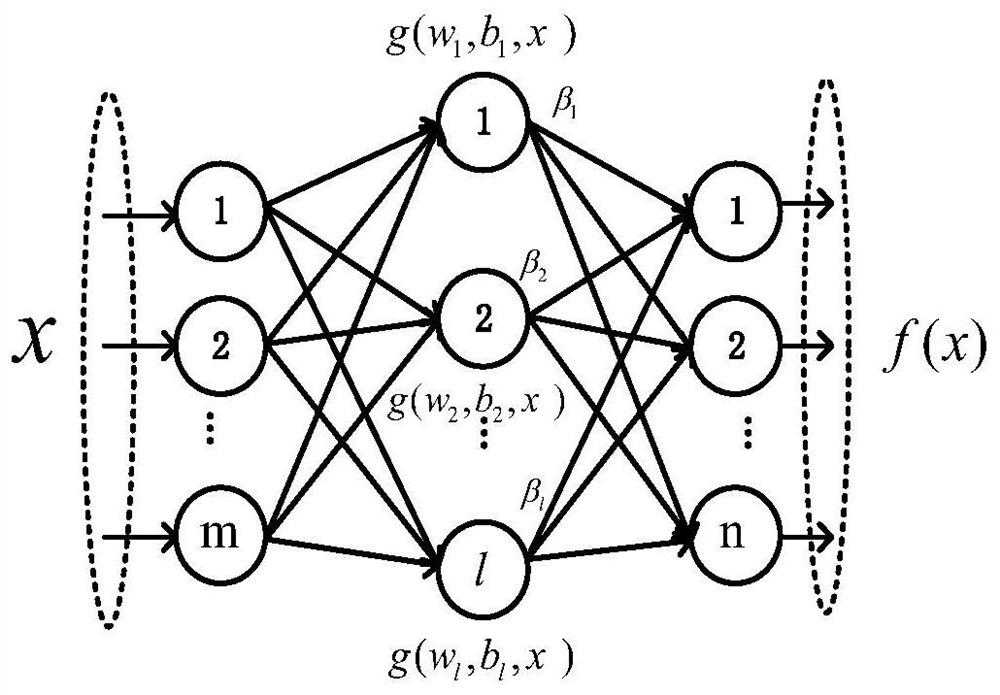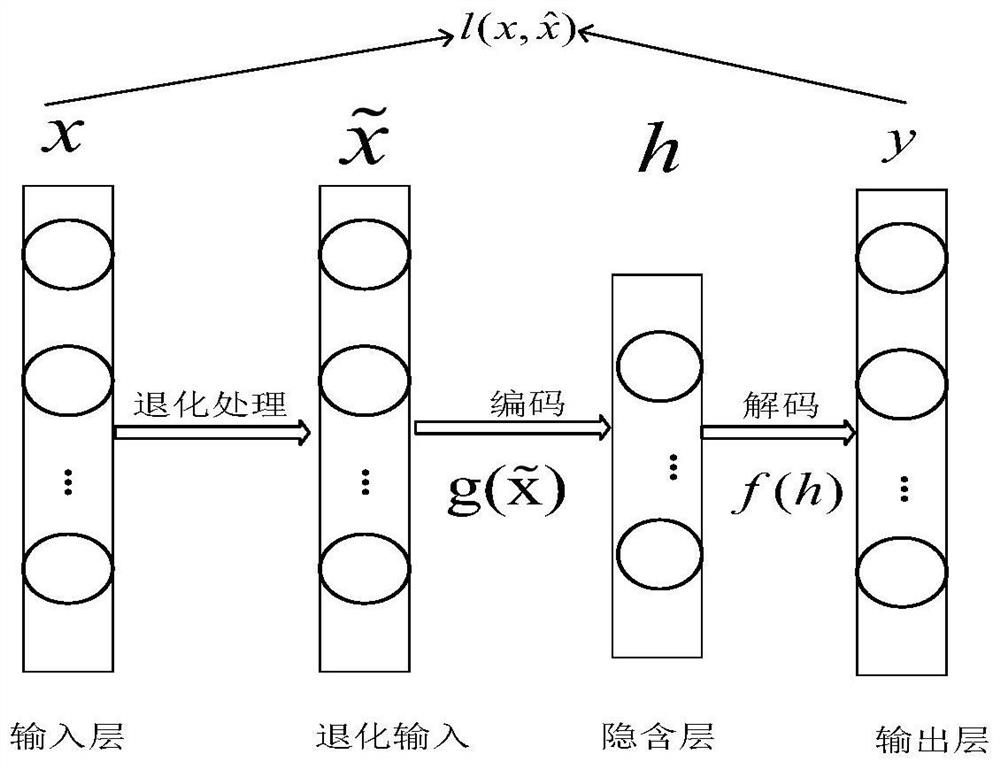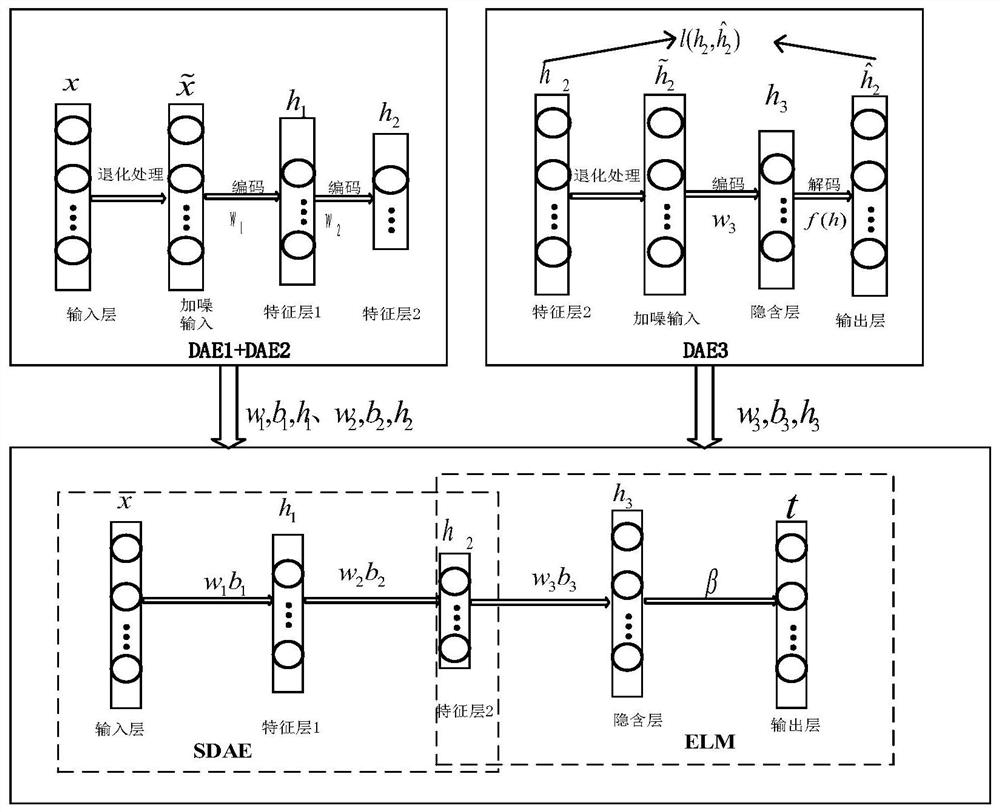LTE uplink interference classification method and system based on stack noise reduction self-coding
A classification method and self-encoding technology, which is applied in the field of LTE uplink interference classification, can solve the problems of falling into local optimal values, unsatisfactory model classification accuracy, and inaccurate interference classification accuracy, etc.
- Summary
- Abstract
- Description
- Claims
- Application Information
AI Technical Summary
Problems solved by technology
Method used
Image
Examples
Embodiment 1
[0045] This embodiment provides an LTE uplink interference classification method based on stack noise reduction self-encoding;
[0046] LTE uplink interference classification method based on stack noise reduction self-encoding, including:
[0047] S101: Obtain LTE base station uplink data to be classified;
[0048] S102: Preprocessing the LTE base station uplink data to be classified;
[0049] S103: Input the preprocessed uplink data of the LTE base station to be classified into the trained extreme learning machine based on stack noise reduction autoencoding to obtain the interference category of the uplink data of the LTE base station;
[0050] Among them, the extreme learning machine based on stack denoising self-encoding includes sequentially connected: input layer, hidden layer h1, hidden layer h2, hidden layer h3, classification layer and output layer.
[0051] Further, the LTE base station uplink data to be classified includes:
[0052] Base station identification num...
Embodiment 2
[0153] This embodiment provides an LTE uplink interference classification system based on stack noise reduction self-encoding;
[0154] LTE uplink interference classification system based on stack noise reduction self-encoding, including:
[0155] An acquisition module configured to: acquire LTE base station uplink data to be classified;
[0156] A preprocessing module, which is configured to: preprocess the LTE base station uplink data to be classified;
[0157] A classification module configured to: input the preprocessed LTE base station uplink data to be classified into the trained extreme learning machine based on stack noise reduction self-encoding to obtain the interference category of the LTE base station uplink data;
[0158] Among them, the extreme learning machine based on stack denoising self-encoding includes sequentially connected: input layer, hidden layer h1, hidden layer h2, hidden layer h3, classification layer and output layer.
[0159] It should be noted ...
Embodiment 3
[0163] This embodiment also provides an electronic device, including: one or more processors, one or more memories, and one or more computer programs; wherein, the processor is connected to the memory, and the one or more computer programs are programmed Stored in the memory, when the electronic device is running, the processor executes one or more computer programs stored in the memory, so that the electronic device executes the method described in Embodiment 1 above.
[0164] It should be understood that in this embodiment, the processor can be a central processing unit CPU, and the processor can also be other general-purpose processors, digital signal processors DSP, application specific integrated circuits ASIC, off-the-shelf programmable gate array FPGA or other programmable logic devices , discrete gate or transistor logic devices, discrete hardware components, etc. A general-purpose processor may be a microprocessor, or the processor may be any conventional processor, o...
PUM
 Login to View More
Login to View More Abstract
Description
Claims
Application Information
 Login to View More
Login to View More - R&D
- Intellectual Property
- Life Sciences
- Materials
- Tech Scout
- Unparalleled Data Quality
- Higher Quality Content
- 60% Fewer Hallucinations
Browse by: Latest US Patents, China's latest patents, Technical Efficacy Thesaurus, Application Domain, Technology Topic, Popular Technical Reports.
© 2025 PatSnap. All rights reserved.Legal|Privacy policy|Modern Slavery Act Transparency Statement|Sitemap|About US| Contact US: help@patsnap.com



